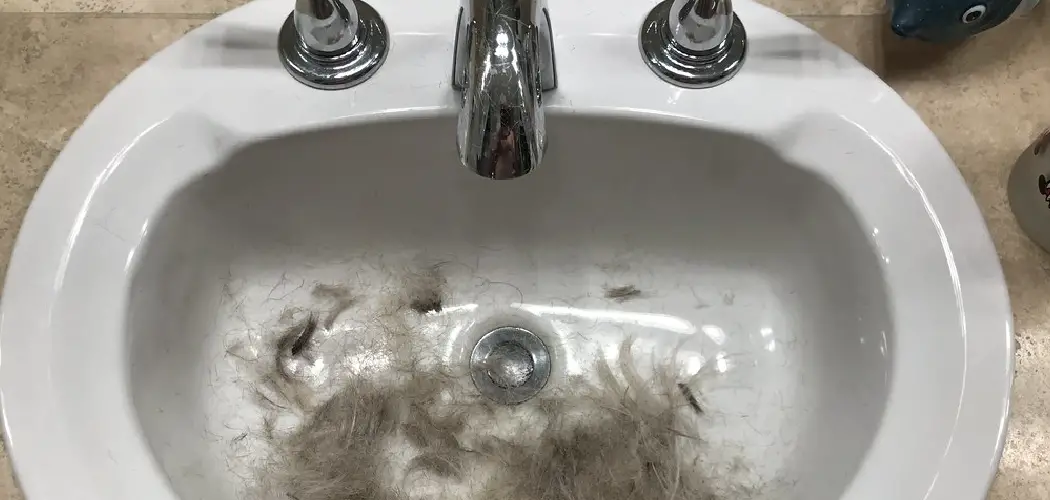If you’ve ever had to get the hair out of a sink drain, you know it’s not an easy task. Hair can be stubborn and cling to the drainage pipes, making it difficult to remove.
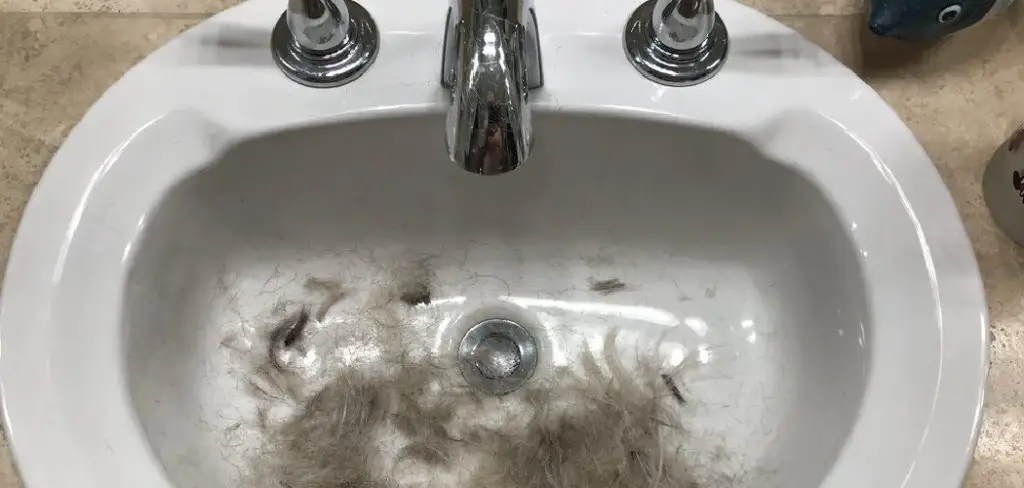
Luckily, there are a few tricks you can use to make the process a little bit easier. Check out these tips for removing hair from a sink drain. In this article, we will discuss how to get hair out of a sink drain. So what are you worried about? Keep on reading the article and clean your sink drain!
How Do You Clean a Bathroom Sink Drain?
The first step in cleaning a bathroom sink drain is to remove any debris or particles blocking the flow of water. To do this, you can use a plunger to dislodge any chunks of hair or soap residue that may be clogging the pipes. If that doesn’t work, you may need to disassemble the drain and use a coat hanger or small snake to break up the clog and remove it.
Once you’ve cleared any blockages, it’s time to use a drain-cleaning product. You can buy commercial products at your local hardware store, but if you don’t want to spend money on that, try using hot water and vinegar instead. Just pour boiling water and a cup of vinegar down the drain, let it sit for about 15 minutes, then flush with cold water. This should help break up any residue that’s built up in your pipes.
Finally, to prevent future clogs from occurring, you can use a hair trap or filter to catch any loose strands before they make their way down the drain. Doing this regularly will help keep your pipes clean and clear of hair-related clogs.
12 Methods How to Get Hair Out of a Sink Drain
1. Use a Plunger
One of the simplest and most effective ways to remove hair from a sink drain is to use a plunger. Plungers create suction that can help to loosen hair and other debris that may be clogging the drain. Be sure to cover the overflow hole with your finger before plunging, as this will help to create a stronger seal. While this won’t work for all clogs, it can be effective in dislodging some of the hair that may be blocking the drain.
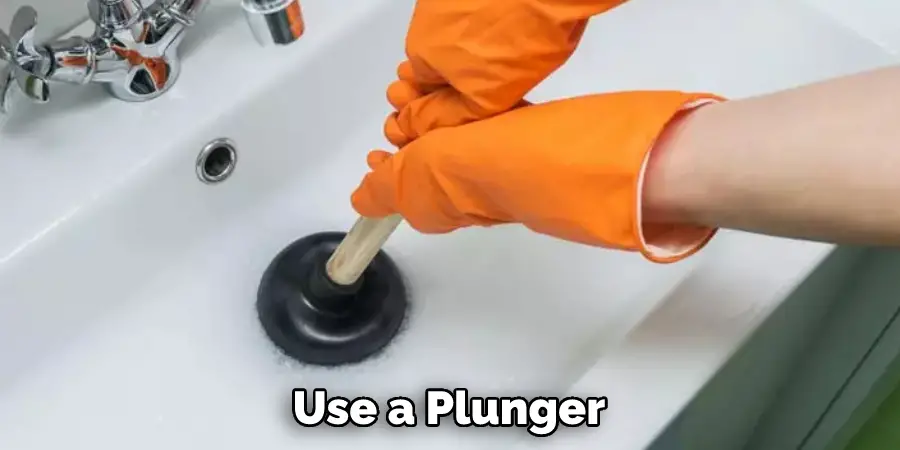
2. Use Boiling Water
Another easy way to remove hair from a sink drain is to pour a pot of boiling water down the drain. The hot water will help to melt any grease or soap that may be clogging the drain, as well as loosen any hair that may be caught in the drain. Therefore, the clog will be cleared, and you can then use a plunger or drain snake to remove any remaining hair. Be sure not to pour too much-boiling water down the drain, as this can damage your pipes.
3. Use Vinegar and Baking Soda
Vinegar and baking soda can also be used to remove hair from a sink drain. Simply pour ½ cup of baking soda down the drain, followed by ½ cup of vinegar. Allow the mixture to sit for 30 minutes, then flush with hot water. The baking soda and vinegar will react to create a foaming action that can help to break up any clogs in the drain.
4. Use a Wire Hanger
If you don’t have a plunger or chemicals on hand, you can still remove hair from a sink drain using a wire hanger. Simply straighten out the hanger and insert it into the drain. Hook the end of the hanger around any hair that may be caught in the drain and pull it out. However, this method will only work if the clog is caused by a large accumulation of hair. Now the drain should be clear and ready for use.
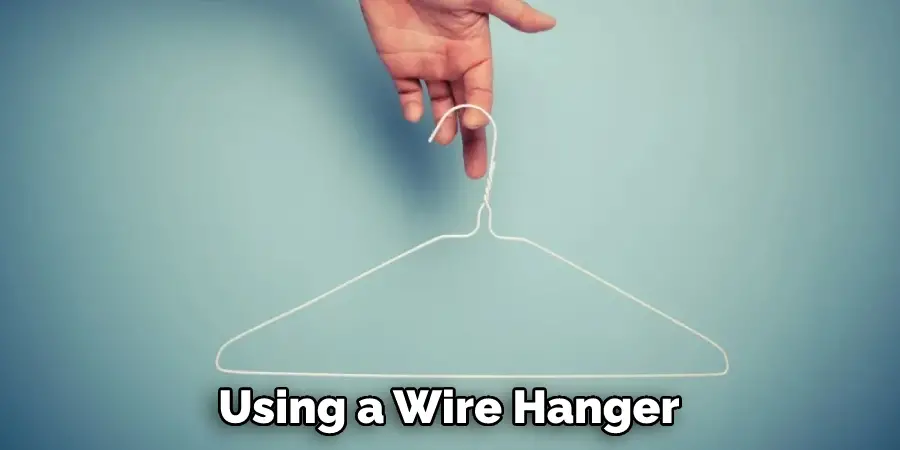
5. Use Dish Soap
Dish soap can also be used to remove hair from a sink drain. Pour ¼ cup of dish soap down the drain, then add hot water until the sink is full. Allow the dish soap to sit for 15 minutes, then run hot water down the drain to flush it away. The dish soap will help to break up any grease or soap that may be clogging the drain, as well as loosen any hair that may be caught in the drain. If the clog isn’t cleared after using this method, try the plunger or wire hanger method.
6. Use Salt
Salt can also be used to remove hair from a sink drain. Simply pour ½ cup of salt down the drain, then add hot water until the sink is full. Allow the salt water mixture to sit for 30 minutes, then run hot water down the drain to flush it away. The salt will help to break up any clogs in the drain. Although this will not work for severe clogs, it can help to keep the sink free of hair and other small blockages.
7. Use a Drain Snake
If none of the above methods work, you may need to use a drain snake. This is a tool that consists of a long, flexible metal rod with an attached handle that can be used to dislodge any blockages in your sink’s pipes. Be sure to use caution when using a drain snake, as it can easily damage your plumbing if used incorrectly.
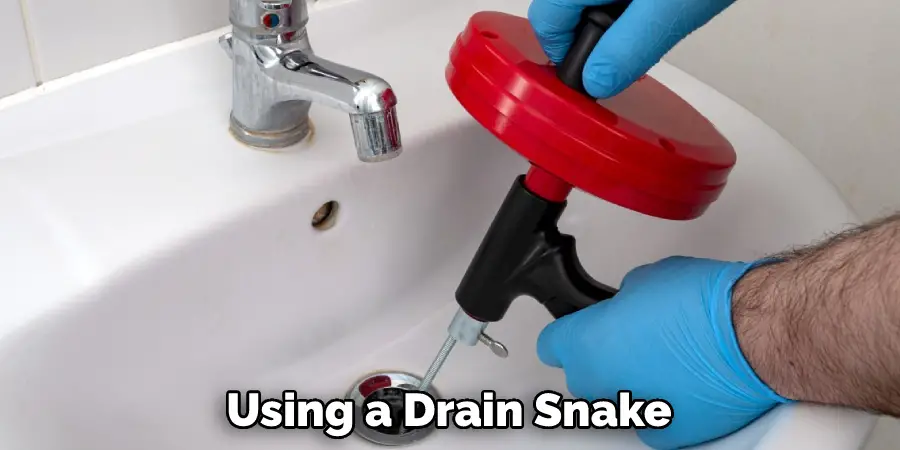
8. Use Alka-Seltzer Tablets
Alka-seltzer tablets are also effective at removing hair from a sink drain. Simply drop two tablets down the drain and add hot water until the sink is full. Allow the mixture to sit for around 30 minutes, and then drain the sink. This should help to break down any hair clumps that have accumulated in the drain. Repeat this process if necessary until all of the hair is gone. Be sure to use caution when pouring hot water into the sink, as it can cause burns if not done carefully.
9. Use a Plunger
A plunger may be used to help dislodge any clogged hairs from your sink drain. Apply some petroleum jelly or vegetable oil around the edges of the plunger so that it will create an airtight seal when placed over the drain opening. Fill the sink with enough water so that when you place the plunger over the drain opening, it creates a vacuum effect. Push down on the plunger several times to help break through the clog. After doing this, turn on the faucet and check to see if the clog has been removed. If not, repeat this process until the clog is gone.
10. Use a Drain Snake
If you have an especially stubborn clog, then a drain snake might be necessary to help remove it. Insert the end of the snake into the sink drain and twist it around as you push it in further. This will help break up any material that has become stuck inside of the pipe. When you’ve reached an impassable blockage, or when water begins to flow freely from the drain, slowly pull out the snake. You may need to repeat this process several times before all of the clog is removed.
11. Consider Professional Assistance
If your efforts have not been successful in removing the clog, consider calling a professional plumber for assistance. They have the tools and expertise to help identify and remove difficult clogs that are beyond the scope of typical DIY repairs. With their help, you can be sure that your sink will be flowing freely once again in no time.
12. Practice Regular Maintenance
The best way to avoid stubborn sink clogs is by practicing regular maintenance on your pipes. This involves cleaning out any debris from the drain trap, as well as using a plunger or auger regularly to break up any minor blockages before they become major problems. Additionally, it’s important to keep an eye out for any leaks or other signs of plumbing damage so that you can have them fixed quickly before they worsen into something more costly down the line. Taking
Tips on Getting Hair Out of a Sink Drain
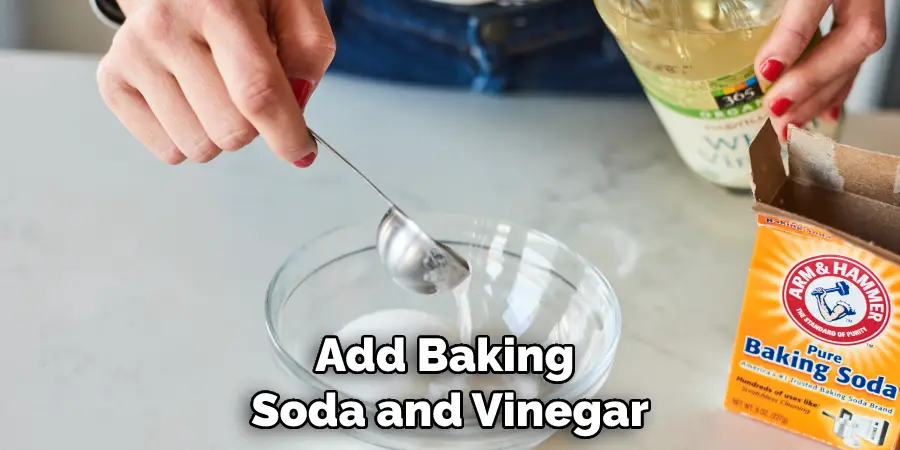
- Fill the sink with enough water to cover the cup of the plunger, then plunge up and down vigorously. This should displace the hair and clear clogs in the sink drain.
- Use a bent wire coat hanger to reach the hair clog. Straighten out the hanger and then use the hooked end to snag the clogged hairs. Pull them out of the sink drain carefully.
- Add baking soda and vinegar to clear a slow-running or clogged sink drain. Pour 1/2 cup of baking soda, followed by 1/2 cup of white vinegar down the drain. Allow the mixture to sit for 20 minutes, then flush with hot water.
- Pour 1/2 cup of salt followed by boiling water to dissolve a sink clog caused by grease buildup. The combination is effective at breaking up grease and debris in the pipes that are causing a clog.
Conclusion
If your hair is constantly clogging up your sink drain, there are a few things you can do to help prevent it. First, try tying your hair back while you’re in the shower so that it doesn’t have a chance to fall into the drain. You can also invest in a mesh screen or drain catcher to catch any stray hairs before they go down the drain. Finally, make sure to clean out your drains regularly with a plunger or plumber’s snakes so that hair won’t have a chance to build up and cause problems. Try these tips on how to get hair out of a sink drain and have a clean drains in years to come.

